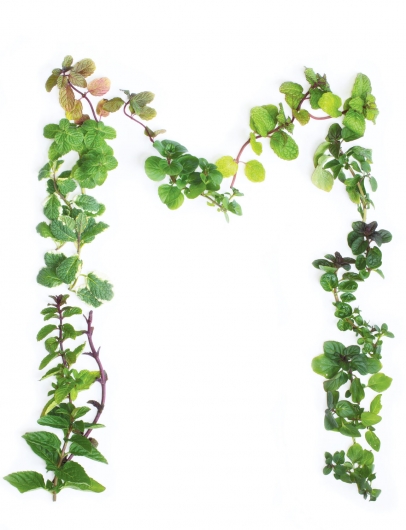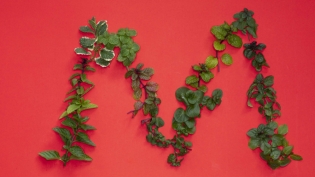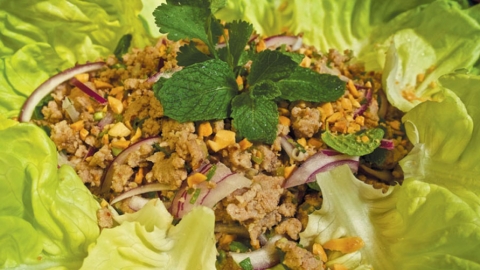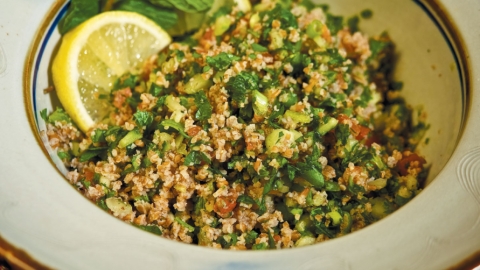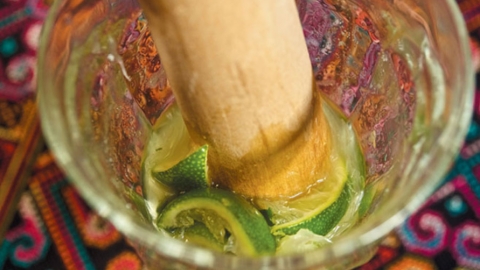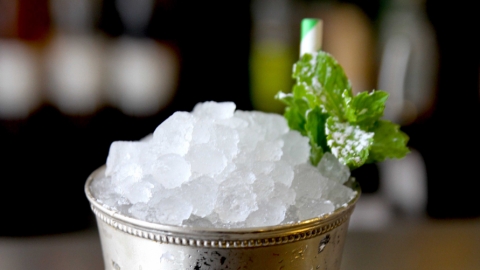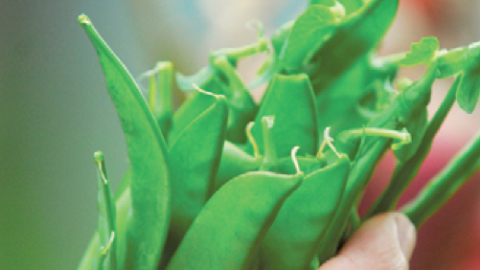Beat the Heat with Mint
If I’m ever overheated, distracted, upset, nervous or just thirsty, mint hits the spot. I have a big pot of mint growing under the garden faucet and make generous use of it. I put sprigs in my water bottle. I pour boiling water over leaves to make instantly refreshing and soothing tea. I toss leaves into my salads and put thin slices on my watermelon.
Mint has natural cooling power. Researchers found a crazy protein in mint called TRPM8 (transient receptor potential cation channel subfamily M member 8) that tricks our mouths and brains into feeling cold. Menthol, the active ingredient in mint oils, is full of it. Even after the first bite a little menthol remains, making the next taste or the next breath of air seem cool and refreshing. Menthol’s effect on the brain also helps satiate thirst, ease breathing and increase alertness and focus. Since ancient times, mint has been used to soothe the stomach and nerves. Sounds like the perfect antidote for the sluggishness-inducing effects of desert heat.
Varieties
Grocery stores usually carry just one kind of fresh mint, Mentha spicata (spearmint). It’s good for all kinds of recipes. The next-most-common variety is Mentha piperata (peppermint), which has a higher menthol content and is best in tea, toothpaste or peppermint candy. There are dozens of exciting variations of these two. To experience the true rainbow of flavors you will need to visit a nursery (see sidebar, page 9). Figure out what you like by rubbing a mint leaf between your fingers and sniffing. I recommend you buy one plant each of Mentha spicata and piperata plus a couple others.
Cultivation
Start your own mint garden no matter where you live. Even if you don’t have any yard at all, mint grows vigorously in a pot on the windowsill. By the way, you will laugh all the way to the bank when you have your own mint growing. Compare homegrown “free” to grocery store prices of $3–$4 per ounce of fresh or dried mint in tea bags. Mint is the easiest plant to grow—it practically grows itself. Either purchase plants, or try digging out a plug of existing mint, or put a couple of sprigs (stems with leaves) into a small glass of water on the windowsill (change the water daily until they grow healthy roots in two to three weeks).
Mint is an invasive plant. That means it will take over, so growing it in a pot is a good idea. In any reasonably well-watered location mint will send runners and pop up everywhere. Mint is perennial with vigorous growth summer and winter. In cold climates it goes dormant, then greens up and bounces back to life in the spring.
Harvesting and Uses
Your plant is going to thrive. You will have lots of mint to use. Snip off the leaves or stems, rinse and use immediately or store in a plastic bag in the refrigerator. To dry the leaves, pop them in a paper bag, put it on a shelf and let it dry in the dark. In about a week the leaves will be crumbly. Store them in a glass jar. Commercial herb dehydrators use heat, destroying some of that dynamite menthol. Your paper-bag-dried mint is going to taste fantastic.
Chef Molly Beverly is a food activist, teacher, caterer, food coach, chair of Slow Food Prescott and former chef of Crossroads Café in Prescott.
These are some of my favorite soothing and delicious fresh mint recipes. Use your favorite mint variety in any of them. These recipes are written for fresh mint but dry mint can be substituted—just use 1/3 as much.


